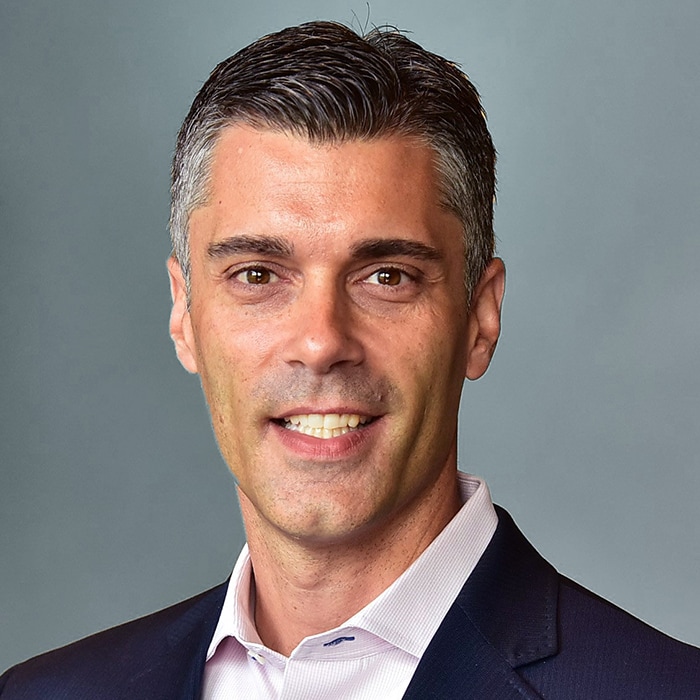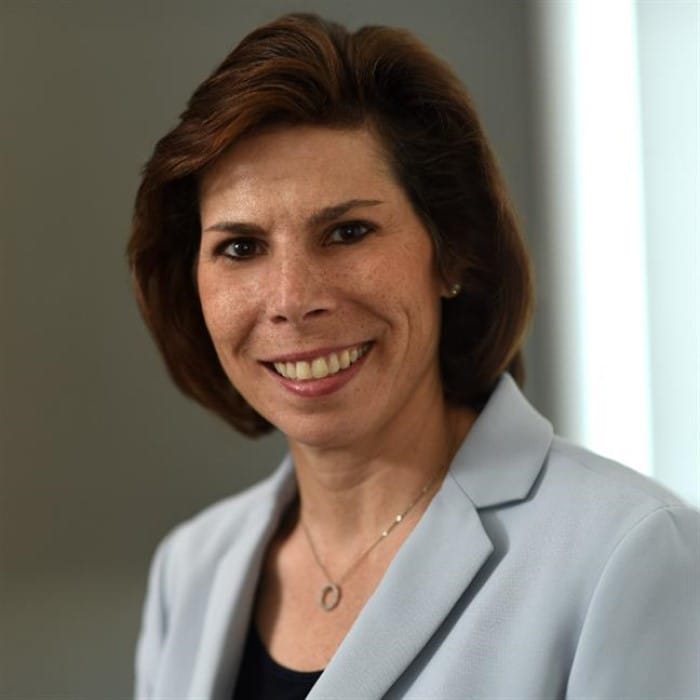Prioritizing human capital—modern challenges and the board’s role has been saved

Perspectives
Prioritizing human capital—modern challenges and the board’s role
On the board’s agenda, November 2022
By Michael Stephan, Art Mazor, Michael Griffiths, Reem Janho, Carey Oven, and Maureen Bujno
Introduction
Many corporate boards are devoting increasing amounts of time to one of their most important assets, their workers. Profound, disruptive shifts in the marketplace and worker expectations coupled with growing demands for transparency and action on environmental, social, and governance (ESG) issues, are elevating a variety of human capital risks and opportunities to boardroom discussions.
For example, many of the topics under ESG are workforce-related matters that have become front and center for many boards. Issues such as culture, purpose, hybrid work, the future of work, well-being, skills gaps, automation, and shifting societal expectations, as well as diversity, equity, and inclusion (DEI), are increasingly appearing on board agendas.
The global pandemic helped accelerate many of the issues driving these discussions, but it wasn’t the sole impetus. Even before the pandemic, shifting demographics, changing expectations, digital transformation, intensifying competition for talent, and succession planning were already becoming part of routine boardroom dialogue, according to a Deloitte report.1
Some boards are beginning to recognize that agency has shifted from employers to workers; the workforce is looking for more meaningful work, a greater focus on well-being with considerations such as more time and place flexibility, and more personalized and agile employment models and career paths. According to the U.S. Bureau of Labor Statistics (BLS), 47.8 million people in the United States quit their jobs in 2021, the largest number recorded by BLS since at least 2001.2 In what was dubbed “the Great Resignation,” resignations represented 69.3% of total separations in 2021.3
This massive shift has reminded many organizations of the importance of workforce issues. A growing number of companies are beginning to acknowledge that traditional work, workforce, and workplace models may need to give way to more fluid, human, and digital approaches that facilitate speed, agility, and innovation. Answers to many of the important questions that are arising are not clear cut, giving the board an opportunity to have a meaningful role in helping organizations shape their human capital strategies.
As part of the journey, many corporate boards are seeking more visibility into talent practices and providing greater transparency to stakeholders, who are demanding accountability from the board, although a 2021 analysis on the current state of human capital disclosure suggests there is room for growth in this area. The analysis of disclosures by the 100 largest employers in the United States shows human capital disclosure is generally low in areas such as wages, compensation, and benefits; job stability; health and safety; training and education; and employment and labor type.4
Regulatory drivers and investor expectations are also contributing to increased board engagement on this subject. In late 2020, the Securities and Exchange Commission (SEC) amended Regulation S-K to improve disclosure of human capital issues.5 In August 2021, SEC Chair Gary Gensler signaled via social media that more requirements may come. “Investors want to better understand one of the most critical assets of a company: Its people,” he wrote. “I’ve asked staff to propose recommendations for the commission’s consideration on human capital disclosure.”6
While an SEC proposal seeking more disclosure of human capital matters is widely anticipated, many institutional investors continue to advocate for corporate actions ahead of regulatory requirements. For example, a recent analysis of 2022 proxy proposals says shareholders at Russell 3000 companies accelerated their call for action on human capital in 2022 with 155 proposals, up from 136 in 2021, on topics such as diversity, sexual harassment, pay gaps, and racial equity.7
Many institutional investors are also urging the SEC to require more disclosure. For example, a group of more than 60 institutional investor groups sent a letter to Gensler asking for a requirement for companies to publicly disclose reports filed with the US Equal Employment Opportunity Commission to provide information on gender, race, and ethnicity of employees across job categories. “Institutional investors seek transparency and public accountability on US workforce composition to better assess the efficacy of DEI programs and policies and foster progress,” the letter said.8
Room for growth
Preliminary analysis of soon-to-be published results of a summer 2022 workforce risk survey by Deloitte Consulting LLP indicates that boards and C-suite leaders have a general sense that broader workforce-related issues are affecting their strategy, but they may not have a complete, integrated point of view, nor a proactive, holistic approach to governing workforce risk.
There is an opportunity for boards and executives to widen how they are looking at workforce risk beyond a traditional lens. Opportunity exists for organizations to effectively understand, measure, and manage the full-spectrum of potential workforce-related threats to their organizations’ operational, reputational, and financial performance. For example, preliminary survey data suggests that most responding organizations indicate they do not have a clear, holistic definition of workforce risk, nor do they have widespread institutional knowledge or coordinated expertise in the area outside of select traditional channels.
Similarly, there is opportunity to bolster oversight and governance with respect to workforce risk-related topics. The early workforce risk survey results indicate that few respondents felt their organizations were prepared to effectively manage the broad and dynamic aspects of workforce risk over the next three years, heeding a call to action for leaders.
Movement afoot
In recognition of a growing need for boards to oversee human capital issues, many boards have been making shifts within their governance structure to address a growing scope of complex issues. A Deloitte analysis of filings by S&P 500 companies over a 10-year period indicates that many boards are expanding the mandate of their committees to address a wider variety of human capital issues, and they are doing so using a variety of approaches.
For example, the analysis of board committee names finds nearly 60 different ways companies identify compensation committees to indicate an expanded scope of oversight. At many companies, the compensation committee name has been extended to include human capital, human resources, talent, or management development. Some companies have also expanded the compensation committee name to focus on executive development, management development, leadership, people development, personnel, succession, and other similar variations. Some companies have de-emphasized “compensation” in their committee names with new names like “culture and compensation,” “talent culture and compensation,” “talent leadership and compensation,” “human capital and compensation,” or “organizational development and compensation.”
In practice, boards generally distribute responsibility for risks across committees in different ways because the bucketing of issues and risks is not always straightforward. With human capital or workforce risk as an example, the category lends itself to alignment with the compensation committee because of its tie to talent, which many companies have done. However, there may be reporting obligations involved with human capital and workforce risk issues that would seem to fall to the audit committee. Similarly, there may be governance matters that would seem to fall to the nominating and governance committee.
The complexity of risk that is rising to the level of boardroom discussion is bringing many boards to an inflection point. Many are considering how to distribute risks and topics across existing committees, whether to form new committees or onboard additional board members, and how to distribute risks and topics in a way that creates neither gaps nor silos in coverage.
Boards need to be deliberate about understanding their most significant talent management issues and deciding whether they should be overseen by the full board or a committee, and if at the committee level, which one. They also need to focus on who in management owns responsibility for each area and what information they are presenting to the board or relevant committee.
Considerations for forward progress
Preliminary analysis of the workforce risk survey suggests that companies operating at a higher maturity level in measuring, monitoring, and managing workforce risk may also self-report better performance than their competitors across a wide variety of business metrics. These insights may be further indicators for boards and C-suite leaders regarding the importance of prioritizing and re-evaluating the meaning of workforce risk across the enterprise to safeguard business outcomes.
In addition to these insights, several expected shifts in the coming years have broad implications and considerations for how companies manage talent as well as how they operate, which boards should understand as they oversee C-suite efforts to adapt. To the extent companies are affected by these expected shifts, boards should engage with their management teams to understand how these shifts may introduce risks to be managed and opportunities to be seized as well as who at the board level and among management will be responsible for them. Some of these expected shifts include:
Worker expectations and agency. In the modern skills- and capabilities-based economy, the workforce has choices and has demonstrated a willingness and ability to act on them. Many companies are exhibiting an increased acceptance of remote and hybrid work models, but the nature of work may still need to change further to keep pace with the workforce. Companies may need to consider, for example, how they can rearchitect work to capitalize on skills, experiences, and interests of individuals as well as how to measure and manage productivity.
A shift to skills. Some organizations are beginning to consider whether work should be more organized around skills rather than jobs.9 The historic focus on defining jobs is embedded in traditional organizational design, but the standardization of tasks into functional jobs may be impeding critical objectives of the times, such as agility, growth, innovation, DEI, and the ability to offer a positive workforce experience for people. A shift to a new operating model for work and the workforce focused on skills rather than jobs could help companies address many of the challenges they face.
Human-technology collaboration. Humans working with technology are transforming work. When designed with a human agenda in mind, technology can improve workplace coordination, cooperation, and communications. It can allow individuals to access necessary resources and enable workers to improve service delivery and efficiency. The evolving metaverse can offer immersive digital interactions that could accelerate the shift. C-suite leaders overseen by boards can explore important questions about how companies can reimagine workplaces, redesign work, and build skills and proficiencies needed to take advantage of the collaborative power of humans working with machines.
Data and privacy. Tension and debate over workforce data is escalating, and it may lead to a better balance between the worker and organization on data control, ownership and benefit. Although data and privacy are commonly considered with respect to consumers, implications for the workforce are equally important. Organizations can build and sustain trust with the workforce by demonstrating responsible collection and storage of personal information, being transparent about how it is used, and providing people with easy-to-access options for managing their personal information. Organizations can also prioritize increased attention to data ownership issues for talent, such as ownership of intellectual property, especially in remote working situations where shared ownership may be relevant.
Trust and corporate governance. Trust across stakeholders, including with the workforce, is critical. According to Deloitte research, there’s a strong correlation between trust and motivation; 79% of surveyed employees who highly trust their employers feel motivated to work, but only 29% of surveyed employees who do not trust their employers are motivated to work.10 Boards and C-suite leaders can prioritize promoting a culture that builds trust by empowering workers and reducing traditional sources of friction. Actions to consider include adjusting workplace strategy to balance workforce desires, organization needs, and cost; rethinking autonomy and decision-making authority; and establishing input and feedback loops between workers and leadership.
Accelerating stakeholder capitalism. A growing number of companies are increasing their focus on their impact on the long-term welfare of their many stakeholder groups. The movement appears to be resonating with the workforce, particularly millennials and Gen Zs, who indicate in a survey of people in those groups that they have made choices regarding the type of work they are prepared to do and the organizations for which they are willing to work based on personal ethics.11 Purpose and impact have become increasingly important to motivating the workforce.
Questions for the board to consider asking:
- Who in management is responsible for human capital risks, and where is the primary oversight responsibility within the board governance structure?
- How does management present and discuss the workforce strategy as aligned to the company strategy with the full board?
- How are the board and its committees adapting to escalating human capital risks to address issues holistically without gaps or silos in coverage?
- To what extent does the board’s approach to human capital go beyond regulatory or compliance matters?
- How can the board elevate its oversight approach as a growing volume and variety of human capital issues make their way onto board agendas?
- How is the board responding to increasing stakeholder expectations for action, transparency, and accountability with respect to human capital issues?
- What information does the board receive from management on each of its key human capital risks? What is the quality of the information, and how frequently is it presented?
- Are C-suite leaders adequately resourced to manage human capital issues?
Endnotes
1 Art Mazor et al., “The elevated talent and culture agenda in the boardroom,” Deloitte Development LLC, 2022.
2 US Bureau of Labor Statistics, “Job openings and labor turnover survey,” new release, reissued March 10, 2022.
3 Ibid.
4 Alison Omens, Aleksandra Radeva, and Kavya Vaghul, “The current state of human capital disclosure,” Harvard Law School Forum on Corporate Governance, October 31, 2021.
5 US Securities and Exchange Commission (SEC), “Modernization of Regulation S-K Items 101, 103, and 105,” August 26, 2020.
6 SEC Chair Gary Gensler, , August 18, 2021.
7 Matteo Tonello, “Shareholder voting trends (2018-2022),” brief 2, The Conference Board, 2022.
8 Amy D. Augustine et al., Letter to Chairman Gary Gensler re: investor support for mandating disclosure of EEO-1 workforce composition data, Boston Trust Walden, November 18, 2021.
9 Sue Cantrell et al., Building tomorrow’s skill-based organization: Jobs aren't working anymore, Deloitte, 2022.
10 Deloitte Digital, “A new measure of trust for consumer industries,” 2022.
11 Michele Parmelee, “Don’t want to lose your Gen Z and millennial talent? Here’s what you can do,” Deloitte Insights, May 18, 2022.
Recommendations
On the Board's Agenda
Top of mind topics for board members
Supply chain strategies: For many companies, the traditional balance is shifting
On the board’s agenda, October 2022





